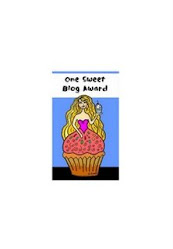You may remember a post I did back in May about an exercise book which was given to me by a friend containing her sewing samples from the 1950's. See here
Well I thought that you might like to see my version which I created as part of my degree.
I was sponsored by Wallis and I went from Southampton to London four days a week for 6 months and learnt how to make wool and cashmere coats, basically how to do a form of tailoring
This was my technical book which I started up as my placement progressed to add notes and instructions which I could take away with me back to college and work on the garments over the weekend. I lived and breathed these 6 coats!! Half way through I was informed that I would have to also make all of the garments that would go underneath. I nearly keeled over at that point.
So this is quite a picture heavy but I thought it would be a good comparison.
Wallis used what we call pattern blocks which is a basic shape which is used as a starting point form which new shapes and designs can be developed from.
Writing notes to go with the drawings helped me when I got back to college.
The book was really useful in that one side had graph paper and the other had lines. So scaled drawings on one side with measurements and fabric samples.
We were trained to try out patterns and shapes in 1/10th scale hence the colour card versions that you can see above.
A page devoted to pocket shapes.
Then a sample in wool and cashmere to test the size and shape. Even today I am proud of the top edge piping!
Technical notes from my pattern cutting theory book and a calico sample to make sure that I knew what I wanted and gfet the stitch size right. The sample above was the one used in the end.
Cuffs styles. Wallis did have their own idea and patterns for cuffs but I also needed to learn how to create a basic cuff so that I could adapt theirs successfully. Understanding HOW something fits or works is half the battle and makes you a much better garment maker, at any level.
The above photograph shows a toile (mock up made in light weight calico) to test out my design using the Wallis base blocks adapted by me to match my design features.
This is the second of the 6 coats that I made.
This is a photo of a photo detail of the top stitching and special button that I found on a mini buying trip to London. I am pretty sure it was from The Button Lady. I did in fact keep this coat in the end but I sold the others as I would not have worn them and several were too long as well. I am not that tall really.
The above picture shows an A3 sheet of photographs which I put together when I was applying for jobs years ago and I then teamed this with another sheet featureing student work and project ideas that i created during my teaching practice, ( I think it went al long way to me getting that all important interview) but you can see what the coats looked like, some of the other garments that I had to make plus bits of the Degree Show at Olympia .
This one is a little damaged but because these were taken before the digital age I do not have a copy of this picture. I really liked this design and if worn the coat was meant to have a flattering shape, a bit like a shorter version of the Channel 1950's style nipped in at the waist with the belt but could also be worn without it as well.
A picture taken at the Fashion show in London which my parents came to see and travelled down from Cambridge. It was a very hot summers day so modelling a winter collection was ironic but it was worth seeing all that hard work walking along and it meant that a huge section of my life had come to an end and it was time to move on.
Over the six months I nearly filled this book and I was so pleased with it. One of my friends said that I should submit it along with my final degree project. So in the end I did and just over 20 years later it has had several house moves but I can not bear to throw it away.
It was a lot of hard work making those garments and carrying all 6 coats on the underground to Harpenden on my own and the sheer lack of sleep I had was only managed due ot the age I was at the time, the desire to do well and not really knowing how else to do it. I should have found accommodation during those 6 months but I could not afford it so I had to commute form Southampton each day four days a week for the 6 months my final project took. There was lot of other work such as a dissertation, German assignments, business studies and a presentation etc etc. looking back I wonder how I managed it but on the other hand I am still doing the same amount of work if not more today.
So there you have it, my own version of the 1950's sewing book ( even though it is about 20 years old!).
Maybe Sophie will put something together as well, only time will tell.
I hope you have enjoyed my trip down memory lane and that even the little test pieces and the ways we choose to learn and record that learning can be of interest in years to come.
xx






























%5B1%5D.jpg)





%5B1%5D.jpg)
































%5B1%5D.jpg)













6 comments:
Thanks so much for sharing your book. It was so interesting to see what you had to do. You should be proud of that piping, it's perfect.
I can't imagine the time it took just to design the coats and then have to make them all up. I don't blame you for not throwing it away. You should be really proud of all your hardwork. Have a lovely weekend.
Ali xx
A fascinating post. I arrived at a career in textiles via art not design so never had to produce anything like this. I am in awe of all that work!
I thoroughly enjoyed reading that so thankyou for taking the time, amazing the stamina you have when your young,thankyou again
That was a pleasure to look at thank you so much.
it is so nice to have that record.
I can sympathise with all the travelling.
I can't think of a single reason to get rid of that, it shows how hard you worked. Well done.
Thank you for sharing your book.
Laptop Screen Replacement
Post a Comment